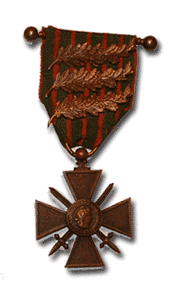United States Air Service
USAS HistorySummary 1917-1918 Lafayette Escadrille
N.124/Spa.124 1st Observation
1st, 12th, 50th, 88th 1st Pursuit Group
27th, 94th, 95th, 147th 1st Bombardment
96th, 11th, 20th 2nd Pursuit Group
13th, 22nd, 49th, 139th 3rd Pursuit Group
28th, 93rd, 103rd, 213th 4th Pursuit Group
17th, 148th, 25th, 141st 5th Pursuit Group
41st, 138th, 638th 3rd Air Park
255th. List of Aces
United States Naval Aviation
US Naval AviationUnited States Marine Corps Aviation
US Marine AviationAircraft
 Nieuport 28
Spad VII
Spad XIII
Fokker Dr.1
Albatros D.Va
Fokker D.VII
Nieuport 28
Spad VII
Spad XIII
Fokker Dr.1
Albatros D.Va
Fokker D.VII
Website: Atlanta SEO
E-mail us

United States Marine Aviation - World War I
The First Marine Aviation Force was organized in Miami on June 16, 1918. Four land-based air squadrons were set up and provisionally named A, B, C and D. But later they were renamed 7, 8, 9 and 10. Once in France, the 7th and 8th Marine Aviation squadrons were located in the village of Oye and the 9th and 10th Marine Aviation squadrons were located at La Fresne. The 1st and 2nd Squadrons were located in St. Inglevert. The 3rd and 4th Squadrons were located in Campagne. These four squadrons were US Navy squadrons and flew Sopwith Camels. The headquarters for the Northern Bombing Group and its eight squadrons was temporarily located at a chateau in St. Inglevert, but it was later moved to the village of Autingues, next to La Fresne.
The Marine pilots went into action quickly. Captain Robert Lytle received the following Distinguished Service Medal citation:
"For extraordinary heroism as commanding officer of Squadron C, First Marine Aviation Force, at the Front in bombing raids into enemy territory. On October 2, 1918, when word was received that a body of French troops had been cut off from supplies for two days by the enemy, and it was decided to feed them by aeroplane, Captain Lytle flew over the besieged troops at an altitude of only one hundred feet and dropped food where these troops could get it. This performance was repeated four times, each time under heavy fire from rifles, machine guns and artillery on the ground.
On October 14, 1918, while leading a raid of seven planes near Fittham, Belgium, his plane and one other became separated from their formation on account of motor trouble, and were attacked by twelve enemy scout planes. Captain Lytle shot down one of the enemy planes, and before his motor quit entirely, landed under fire in the Belgian front line trenches."
On October 14th, the US Marine squadrons of the Northern Bombing Group operated the first of eight American missions against German targets. The US Navy's 9th Squadron equipped with American DH-4s and British DH-9s and struck the German railway sidings at the little town of Thielt, 10 miles south of Bruges. In all, the eight raids totaled 15,502 pounds of bombs dropped on enemy held territory. They also dropped an additional 60 tons while assisting the British in attacking their objectives.
On October 22nd, Marine aviators H. C. Norman and C. W. Taylor were shot down and killed. Both received the DSC posthumously with the following citation:
"U. S. M. C. For extraordinary heroism as a pilot in the First Marine Aviation Force, at the front in France.
While on a bombing raid into enemy territory, October 22, 1918, he became separated from the other planes of his formation, owing to heavy fog and while so cut off was attacked by seven ene-my scout planes. In the engagement which ensued he behaved with conspicuous gallantry and in-trepidity, continuing the fight against overwhelming odds until he himself was killed and his plane shot down."
File under:
Squadron A, First Marine Aviation Force
Squadron B, First Marine Aviation Force
Squadron C, First Marine Aviation Force
Squadron D, First Marine Aviation Force
Squadron 7, First Marine Aviation Force
Squadron 8, First Marine Aviation Force
Squadron 9, First Marine Aviation Force
Squadron 10, First Marine Aviation Force
NAS Pensacola
United States Naval Aviation - World War I
United States Marine Aviation - World War I
Northern Bombing Group
The American Northern Bombing Group in World War I had eight squadrons - four marine and four navy. These were the first marine aviation squadrons and the first navy aviation squadrons. Tags:
7th Squadron
8th Squadron
9th Squadron
10th Squadron
Marine Aviation
1917
1918
La Fresne Aerodrome
Oye Aerodrome
St. Inglevert Aerodrome
Campagne Aerodrome
1st Squadron
2nd Squadron
3rd Squadron
4th Squadron
US Naval Aviation
United States Marine Corps Aviation
Events/Airshows
 Events/Airshows
Events/Airshows
Pilots/Aviators
 Raoul Lufbery
Raoul LufberyAce of Aces Eddie Rickenbacker
26 victories Quentin Roosevelt
Son of President KIA Frank Luke
18 victories in 17 days Eugene Bullard
1st African Am. Pilot David Ingalls
1st US Navy Ace List of USAS Pilots
Find a Relative American WWI Pilots
Mini bios
USAS Research
 USAS Videos
Reading List
USAS Videos
Reading ListWWI US Aviation Related Links
WWI US Aviation Credits War Wings
by Phillip W. Stewart WWI Maps
Units & Airfields Payne Field
USAS Aerodromes now... USAS Archives
Questions? Need Help? American Expeditionary Forces
WWI Doughboys in France